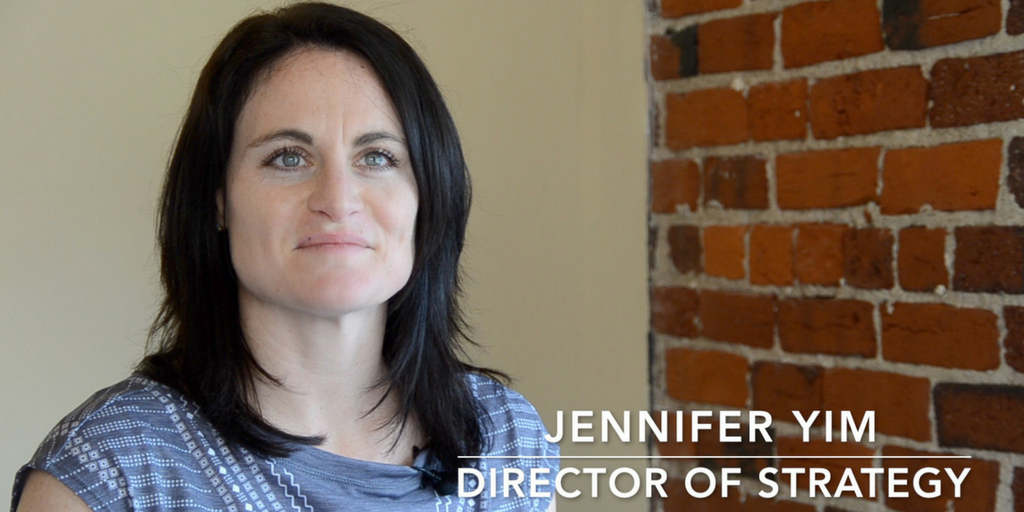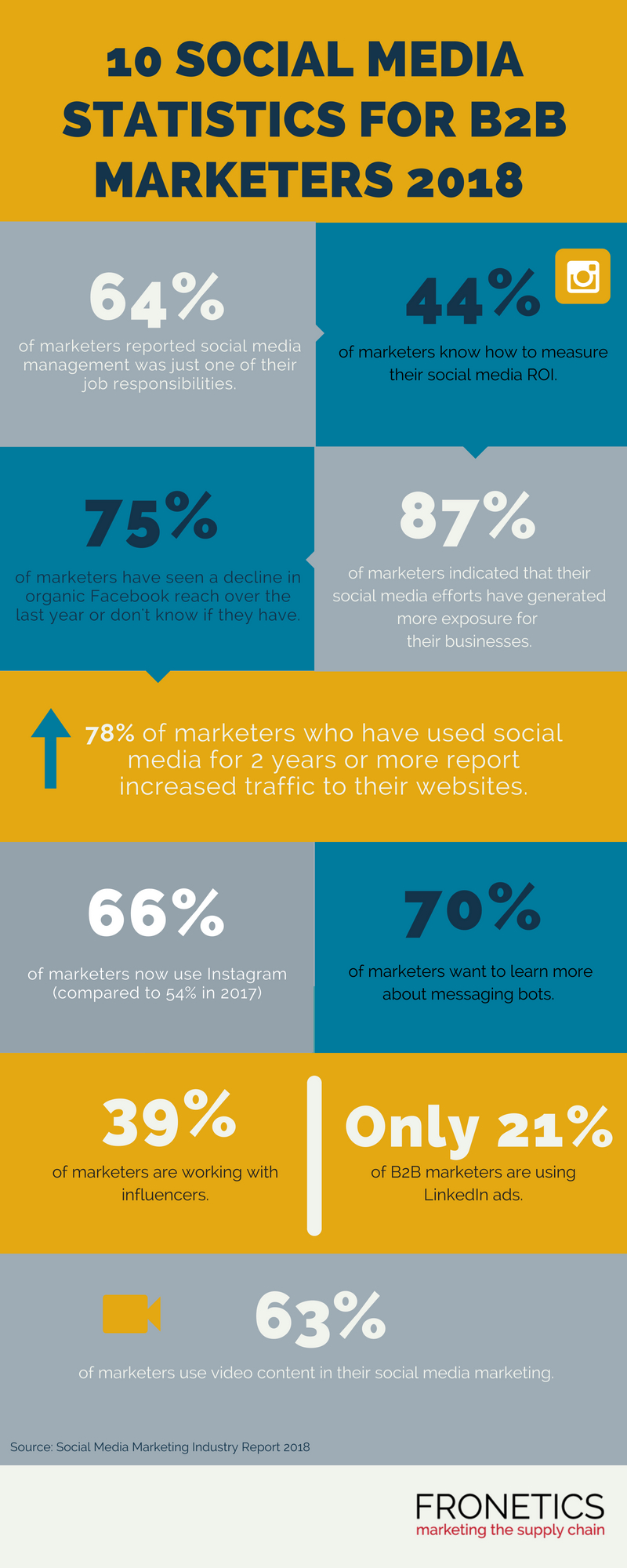
by Fronetics | Aug 20, 2018 | Blog, Content Marketing, Logistics, Marketing, Strategy, Supply Chain
Here’s a breakdown of the latest findings regarding the best time to send an email and what we recommend for getting the most of out of your email marketing efforts.
We are all inundated with daily emails. Whether it’s work emails, special offers from brands you love, or straight-up spam email, we all have inboxes full of emails – most of which will never be opened.
But, on the flip side, “email is the third most influential source of information for B2B audiences, behind colleague recommendations and industry thought leaders,” reports WordStream.
So how do you get your emails to stand out in cluttered inboxes? How do you get readers to actually open — and scroll through — your thoughtfully crafted content?
At Fronetics, we believe there isn’t a one-size-fits-all answer to what works best for email marketing. In order to be successful, you need to take into consideration:
- Who is your target audience?
- What job titles do they hold?
- What kind of devices do they use?
- When are they commuting to work?
Taking a look at the schedules and habits of your target audience will give you insight into the optimal times for readers to engage with your emails. Here’s Jennifer Hart Yim, director of strategy at Fronetics, with a look at what we recommend when trying to find your optimal time to send marketing emails.
[bctt tweet=”Taking a look at the schedules and habits of your target audience will give you insight into the optimal times for readers to engage with your emails. ” username=”Fronetics”]
Video: When is the best time to send an email?
Takeaway: Trial and error
As with most aspects of content marketing, there’s no universal answer to the best time to send marketing emails. The only way to truly know what works best for your company is trail and error. You’ll have to test dates and times to find the best time to send an email your target audience.
But keep in mind that there are other factors, aside from date and time, that affect open and click-through rates. You’ll also have to play around with frequency, subject lines, length of emails, and the overall look and feel of your email.
Have you tested your best time to send an email? What worked for your company?
Related posts:


by Fronetics | Aug 16, 2018 | Blog, Content Marketing, Data/Analytics, Logistics, Marketing, Social Media, Supply Chain
The latest social media statistics show growth of Instagram, more metrics for ROI, social messaging bots, and video content.
One thing that always holds true with social media platforms: they are constantly changing. Platforms like Facebook, Instagram, and Twitter have used 2018 to continue this trend of continual growth and improvement.
[bctt tweet=”One thing that always holds true with social media platforms: they are constantly changing. Platforms like Facebook, Instagram, and Twitter have used 2018 to continue this trend of continual growth and improvement.” username=”Fronetics”]
It’s important with all the changes to take a pause and analyze where these changes are taking us. Simple data can point us to the latest trends and show us where social media is heading.
Social Media Examiner’s 10th annual study, 2018 Social Media Marketing Industry Report, surveyed more than 5,700 marketers from across the world in a variety of industries to see how social media is changing. It offers a really comprehensive view of what’s going on in social media in our industry and beyond.
“This industry report also shows you how marketers’ organic activities have changed and what their future plans are with organic and paid social media,” write the report’s authors.
Here are 10 social media statistics from the report that reflect where social media is headed and what B2B marketers need to be paying attention to.
Infographic: 10 social media statistics for B2B marketers 2018

(Made with Canva)
Still want more?
I really recommend reading the 44-page report in its entirety from Social Media Examiner. There are pages and pages of interesting social media statistics that offer valuable insight into how marketers from all industries are using social media.
The report also shows how social media has changed in the last few years and even more rapidly in the past few months. With messaging bots and video content on the horizon, it’s hard not to wonder where social media will take us next.
What social media statistics are most interesting to you?
Related posts:


by Fronetics | Aug 1, 2018 | Blog, Content Marketing, Marketing
The Fronetics blog will be taking a brief summer vacation.
Starting today, the Fronetics blog will be taking a little hiatus. Don’t worry — it’s only for 2 weeks! We are working on some exciting things behind the scenes and can’t wait to share them with you.
We’ll be back with our regular posting schedule beginning Wednesday, August 15. If you find yourself missing us while we’re away, feel free to check out our ever-growing list of resources for supply chain and logistics marketers.
Or feel free to browse through our recent posts. We’ve been covering some really interesting stuff lately. There’s a little something for everyone — whether you’re looking for industry marketing trends or DIY content marketing guides. Here are a few favorites:
We hope you have a safe, wonderful, and relaxing end of summer, and we look forward to having you back in two weeks!


by Fronetics | Jul 31, 2018 | Blog, Content Marketing, Logistics, Marketing, Social Media, Supply Chain
Also in social media news July 2018: Instagram publishes a creator handbook with tips and tricks, YouTube features searchable hashtags, and Facebook debuts funded news shows.
Summer is half over and big box stores are already stocking their shelves with back to school supplies. While families are trying to sneak in their last trips before school, social media platforms are doing anything but going on a vacation.
LinkedIn, Facebook, Twitter, and Instagram are increasing updates and adding new features to keep their users happy while posting videos and pictures from their travels. But these updates and new features don’t just benefit personal users. Businesses are being positively impacted as well.
Social media platforms are continuing to add content kits, and even detailed guides, to help advertisers increase brand awareness and user reach. From paid spotlight ads to new creative tools, it’s becoming easier for companies to create interactive and engaging content with a few clicks on a computer.
[bctt tweet=”From paid spotlight ads to new creative tools, it’s becoming easier for companies to create interactive and engaging content with a few clicks on a computer.” username=”Fronetics”]
Here’s what’s been happening in July with your favorite social media platforms and how business are gaining more and more options for reaching new audiences.
Here’s your social media news for July 2018.
LinkedIn introduces new updates to LinkedIn Messenger
Along with some new updates to its news feed, LinkedIn made improvements this month to its messenger features. These features now include the ability to send attachments, incorporate images from screenshots, and start a group chat on the mobile version of LinkedIn messaging. LinkedIn says these updates will help professional conversations take on new formats — either more professional or more chat-like, depending on the needs of the user.
Facebook adds new creative tools for advertisers
Facebook introduced a new suite of creative tools for advertisers in its Ads Manager app that will make it easier for creators to build content from their mobile devices. Facebook writes, “These new creative tools allow you to create and edit ad images directly from the Ads Manager app, saving time and effort.” The suite also allows creators to fully customize ad templates and color filters to further branding opportunities for companies and improve the quality of ads within the app.
YouTube introduces searchable hashtags above video titles
YouTube has introduced a new way of displaying hashtags on its app — directly above the title of a video. Android Police states these hashtags are “clickable and will bring up a results page with other videos tagged with the same hashtag.” This new feature is currently only available in the U.S. but will give users greater access to video content by having hashtags prominently displayed above video titles.
Facebook debuts funded news shows
Anderson Cooper is headed to Facebook. On July 16, the social media platform debuted its first funded news show, including programming from ABC News, CNN, Fox News, and Univision. These programs will appear in a section of the Facebook Watch tab. “This section will feature news videos from national and local news Pages, and just like other sections in Watch, will be personalized based on the publishers you follow and what friends are watching,” writes Facebook’s blog.
Twitter testing promoted spotlight ads
Twitter is testing a new paid advertising option, Promoted Trend Spotlight Ads. These ads will allow advertisers to create a display banner at the top of the Explore feed for the first two times a user visits that day, before settling back into the Trends list. If approved, the new ad option will actually demote organic content pushing paid spotlight ads to the top of users’ feeds. Be on the lookout for the first trial ads coming from Disney in the new few weeks.
Facebook adds archive ability to Stories
Back in May, TechCrunch reported that Facebook was testing the ability to archive Stories, allowing users to save video clips after they expire to watch later or re-share on social media. Now other sources are reporting this update is becoming available to new users. Brands using Facebook Stories are particularly interested in this new feature, which would allow potential customers the ability to reference their content when making purchasing decisions.
Instagram publishes creator handbook
Questions about how to best promote your content on Instagram? Now we all have the answers. Instagram just published a 50-page Creator Handbook that covers tutorials, tips and tricks, suggested apps, and tools for creating and editing video. The guidebook, originally shared by Matt Navarra from the Next Web, will be extremely useful to brands looking to take their content to the next level, adding new features and editing capabilities.
Related posts:


by Jennifer Hart Yim | Jul 30, 2018 | Blog, Content Marketing, Logistics, Marketing, Supply Chain, Talent
A new article discusses the way that automation, AI and big data are transforming the industry. It raises the alarm that supply chain management will soon cease to exist, only to assert that it will still exist, just in a very different form.
This guest post comes to us from Argentus Supply Chain Recruiting, a boutique recruitment firm specializing in Supply Chain Management and Procurement.
A new article in Harvard Business Review has been generating some automation-related controversy in the Supply Chain Community, as well as lots of buzz and interesting conversation. Naturally, we at Argentus want to weigh in. Titled, “The Death of Supply Chain Management,” the article discusses the way that automation, AI and big data are transforming the industry. It raises the alarm that the function will soon cease to exist, only to – as these “X is dead“ articles often end up doing – assert that it will still exist, just in a very different form.
Beyond the obviously clickbait headline – which we couldn’t help but indulge in ourselves – the article makes some fascinating predictions about the future of supply chains. But even more relevant to us at Argentus, it has some interesting forecasts about the future of supply chain talent in particular, in the coming world where automation is king.
Automation is one of the hotter topics in the supply chain community – as it is across the entire economy. As a major feature in McKinsey discusses, automation has already made a number of jobs in the field way less relevant, threatening to eliminate those jobs entirely. Many companies have already automated their front-line transactional purchasing activities. Automation has eliminated a number of blue-collar supply chain jobs in warehouses and distribution centres, and driverless trucks stand to transform the logistics field, eliminating the need for millions of truck drivers.
But many are alarmed that automation will replace white-collar workers as well. The HBR article talks about how more companies are automating functions like demand forecasting, which has long been seen as more of an “art” than an exact science. No longer.
In the authors’ words, “within 5-10 years, the supply chain function may be obsolete, replaced by a smoothly running, self-regulating utility that optimally manages end-to-end workflows and requires very little human intervention.”
[bctt tweet=”Automation through digital technology isn’t really just about lowering labour costs, it’s about creating huge opportunities for companies to dive deep into data and create end-to-end visibility into their own supply chains.” username=”Fronetics”]
Automation through digital technology isn’t really just about lowering labour costs, it’s about creating huge opportunities for companies to dive deep into data and create end-to-end visibility into their own supply chains. This kind of visibility opens up huge opportunities, not only by lowering risk but also by letting companies become more strategic.
The HBR article outlines an interesting development: more retail and manufacturing companies are adopting “digital control towers” for their supply chains. These companies have physical rooms staffed with dozens of data analysts working in real-time to identify and squash challenges.
Picture an airport control tower, but for supply chain management: staffed 24/7, full of large screens full of 3d graphical representations of potential bottlenecks and inventory shortfalls all the way from order to delivery. These control towers are full of systems that can automatically correct for various issues, and they’re increasingly considered to be core aspects of company operations.
The authors outline how mining company Rio Tinto is using robotic train operators, cameras, lasers, and tracking sensors to monitor and fully automate its supply chain from train to port.
But do these developments hearld the end of the need for skilled Supply Chain professionals? Of course not.
A highly-automated “digital control tower” needs responsive individuals with deep understanding of how to solve Supply Chain challenges. An automated mining supply chain deep in the jungle, monitored in another country still needs people to monitor it and respond to issues.
Maybe unsurprisingly, the HBR article ends up saying that Supply Chain people will always be in demand, but that skill needs are changing, and we agree. People need to re-skill, up-skill, and educational institutions need to make sure that they’re training people with skills for the future and not the past. In the short term, executives who can manage people doing repetitive tasks (like transactional purchasing) need to learn how to manage information flows for more highly-specialized workers. Further down the ladder, the highest-demand analysts will be those who can draw insights from an ever-expanding pool of data and communicate them to senior leadership. Companies will need specialists with deep understanding of both technology and operations to design and implement automated supply chains – even more than they already do.
But beyond the trends that the HBR article outlines, we think they’re missing a key element: even if automation progresses to affect white-collar workers, even if data automates functions like supply planning, logistics, and sourcing, the human element will always matter. Companies will always need people who can build relationships with vendors when conducting large-scale Procurement. They’ll always need people who can negotiate contracts and rates, people who have the emotional intelligence to understand the psychology of the person sitting on the other end of the table, and arrive at a deal that drives value.
Machines will get better at the tactics, but the strategy will always be human, at least until the robots take over the world completely. (Which we don’t think will happen, by the way).
In the 19th century, luddites protested the adoption of machines in the British textile industry, fearing that they’d be out of a job. And they were. But while opportunities for weaving by hand disappeared, employment didn’t: the industrial revolution pushed new skillsets to the fore, creating a demand for people to manage production – leading to today’s supply chain function, by the way – while raising overall wealth and standard of living in the process.
While the rise of AI, big data and workplace automation has some important differences, we think it’s a worthwhile analogy: as with then, these new technologies will shift the employment landscape and put the squeeze on individuals with transactional or blue-collar skillsets. But supply chain professionals who can up-skill themselves, and become masters of the interpersonal skills that will never go away, will have more opportunities than ever before.
Take it from a company that’s on the front-lines of hiring in Supply Chain: while automation eliminates jobs at the lower-skilled end of the spectrum, demand for high-skilled candidates is higher than ever before, and only rising. So is Supply Chain Management on death’s door?
Not so fast.
Related posts:


by Fronetics | Jul 26, 2018 | Blog, Content Marketing, Logistics, Marketing, Social Media, Supply Chain
Social messaging apps have taken over the way consumers are interacting with brands. Their increasing popularity means your business needs to embrace this new trend.
No one can deny the reach of social networks. After all, Facebook has over 2 billion active users. But as marketers, we’re noticing that consumers are moving away from social networks and welcoming the popularity of messaging apps with open arms.
Social media is constantly changing, and every new app gives users a new way to engage with family, friends, and brands. With the shift toward messaging apps, your target audience is making the leap, so your business needs to as well.
Messaging apps have a strong appeal: personalized engagement. Brands are able to make a one-on-one connection with every potential customer that comes in contact with their app pages. This is an opportunity you cannot miss!
Companies reaping the messaging app benefits
Yoox Net-a-Porter, a UK-based ecommerce firm with U.S. operations, made the switch to messaging apps after the brand discovered that many of its customers preferred WhatsApp for product details and suggestions and purchases. WhatsApp easily integrated with its order management system and is currently being tested as the company’s shipping notification system.
“Realizing that consumers increasingly prefer to receive information via personal messaging services rather than email, we have been working with WhatsApp to improve the way we use the WhatsApp service with great results so far,” writes Yoox Net-a-Porter on its blog.
And Yoox Net-a-Porter isn’t the only brand making the switch. WhatsApp, a social messaging platform owned by Facebook, reported 1.5 billion active users and over 60 billion messages sent per day at the end of 2017. These numbers, continuing to grow at a staggering rate, make it hard to ignore that brands need to be investing their marketing time and dollars in messaging apps.
[bctt tweet=”WhatsApp, a social messaging platform owned by Facebook, reported 1.5 billion active users and over 60 billion messages sent per day at the end of 2017. ” username=”Fronetics”]
In our latest video, Kettie Laky, our social media director, discusses why social messaging apps are becoming so popular and the top four apps your brand should become familiar with.
Video: Top 4 social messaging apps your brand needs to be using
Takeaway
As with any new marketing effort, trial and error are a big part of the equation. In order to get the most from your time (and budget!), make sure you’re utilizing the best messaging app for your brand. Before committing to an app, ask these important questions:
- Who is my target audience?
- How will the app add value to my target audiences?
- How do I want to deliver my content?
- Do I want to use more than one app?
- How frequently will I be marketing on the app?
These questions can help you find the social messaging apps that will work best for your marketing campaign and start connecting with customers in a more personalized way. These apps making sharing valuable content easier than ever.
What social messaging apps has your business tried?
Related posts:











